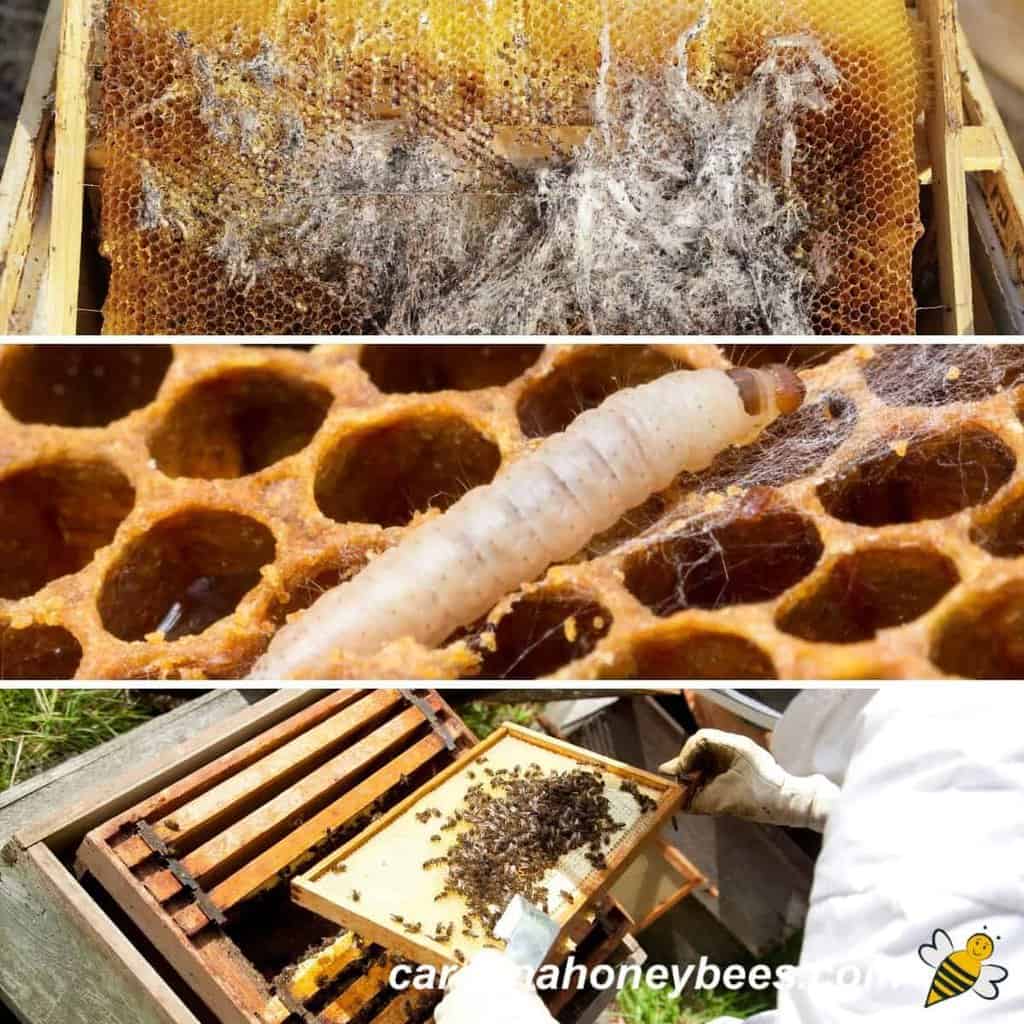Are you interested in beekeeping? Do you want to learn more about the common honeybee? If so, you’ve come to the right place! This article will provide an introduction to beekeeping and discuss the essential information you need to know about the common honeybee. From the bee’s anatomy to their life cycle and more, this guide will give you a comprehensive overview of the basics of beekeeping.
Species of Common Honeybee
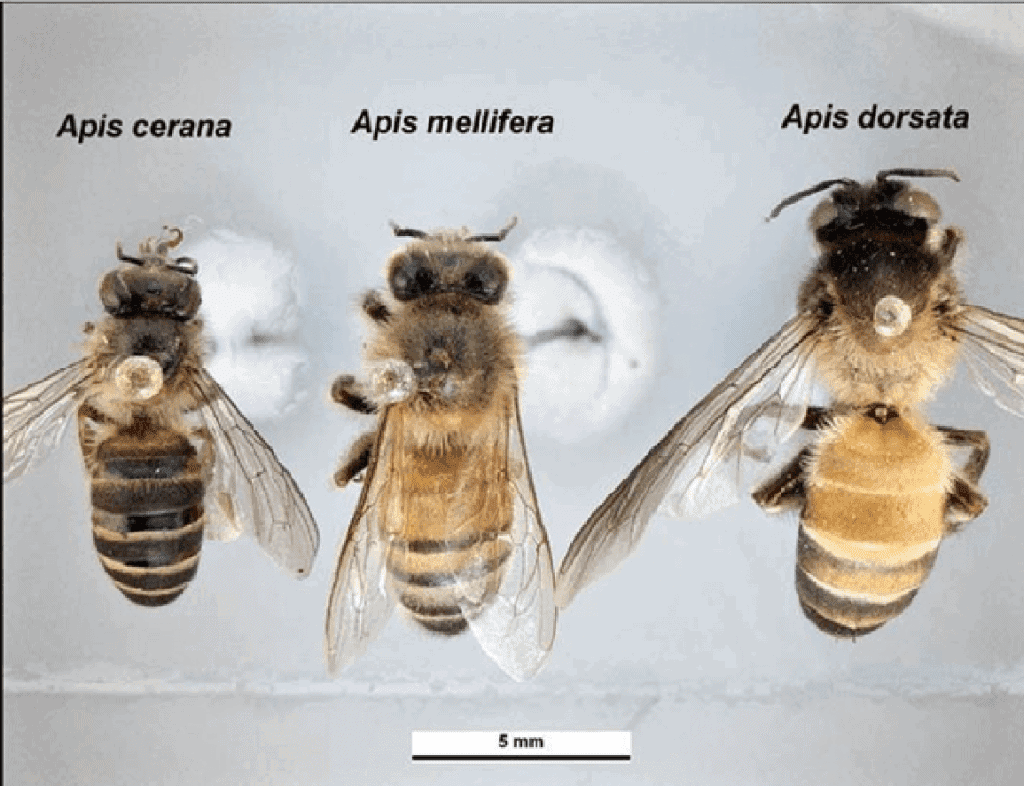
The most common species of honeybee is the Apis mellifera. This species of honeybee is found in most parts of the world and is widely accepted as the “best honeybee in the world” due to its exceptional capacity for production and its ability to survive in a variety of climates.
Best Honeybee in the World
Apis mellifera is a highly productive species of honeybee and has been used for centuries to produce honey and beeswax. It has a long-standing reputation for its excellent honey production and its capacity for foraging over long distances in search of nectar and pollen. Furthermore, it is quite resistant to a variety of pests and diseases, making it a great choice for beekeepers who want to ensure the health of their hives.
In addition to being a great honey producer, Apis mellifera has also been used to pollinate crops, making it a valuable asset to farmers around the world. It is also a great choice for beekeepers who are looking to get started in the hobby of beekeeping, as it is relatively easy to manage and care for.
The Apis mellifera is certainly the best honeybee in the world and is a great choice for anyone looking to get into beekeeping or to increase their honey production.
Characteristics of Common Honeybee
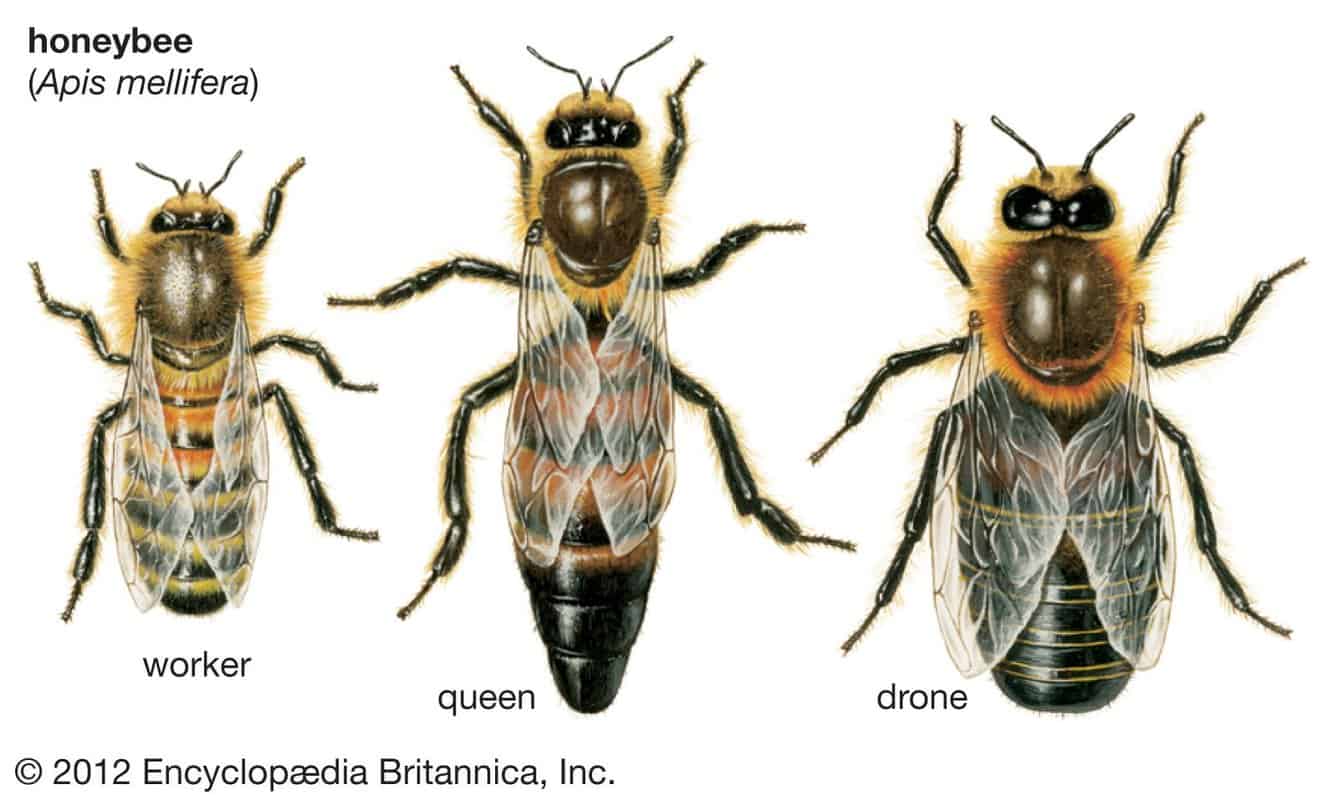
The common honey bee species, Apis mellifera, is the most widely distributed bee species in the world and the most popular among beekeepers. It is a social insect that lives in colonies and is known for producing honey and beeswax.
Size: Honeybees are small, typically measuring between 10-15 mm in length.
Coloration: They are usually dark brown or black in color, but some species may have yellow stripes.
Lifespan: The average lifespan of a worker honeybee is 6-8 weeks, whereas the queen may live up to 5 years.
Diet: Honeybees feed on nectar and pollen from flowers.
Reproduction: Worker honeybees are capable of producing drones (male honeybees) and new queens.
Behavior: Honeybees are highly social insects that live in colonies of up to 20,000 individuals. The colony is led by a queen, who is responsible for laying eggs. The workers build and maintain the hive, and the drones provide protection.
Habitat: Honeybees can be found in a variety of habitats, including pastures, orchards, forests, and urban areas.
Physical Characteristics: Honeybees have three body parts – head, thorax, and abdomen. They also have two antennae, three pairs of legs, and two pairs of wings.
Life Cycle of Common Honeybee
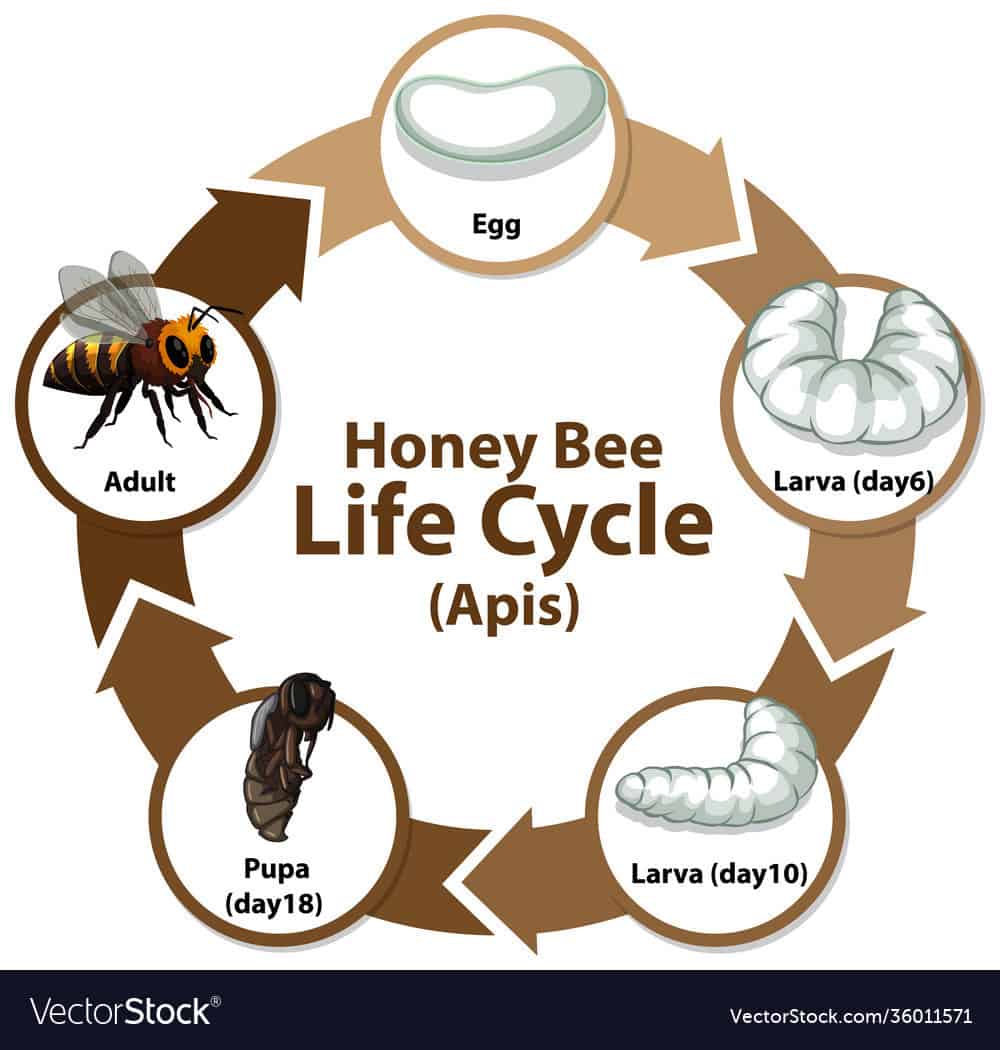
The life cycle of the common honeybee is an incredible process that starts with an egg and ends with a fully-developed adult bee. The egg hatches into a larva and is fed by nurse bees. After three to four days, the larva spins a silken cocoon, during which it undergoes metamorphosis and becomes a pupa. The pupa finally emerges as an adult bee.
| Stage | Duration |
|---|---|
| Egg | 3 days |
| Larva | 6 days |
| Pupa | 12 days |
| Adult | 24 days |
The entire process from egg to adult takes about 24 days. During this time, the common honeybee undergoes several changes and adapts to its environment. As an adult, the bee can live for up to six weeks, depending on its role in the colony. Worker bees and drones have shorter lifespans, while the queen can live up to five years.
The life cycle of the common honeybee is an amazing process and an important part of beekeeping. Each stage of the cycle has its own challenges and rewards, and understanding it is the key to successful beekeeping.
Common Honeybee Habits and Behavior
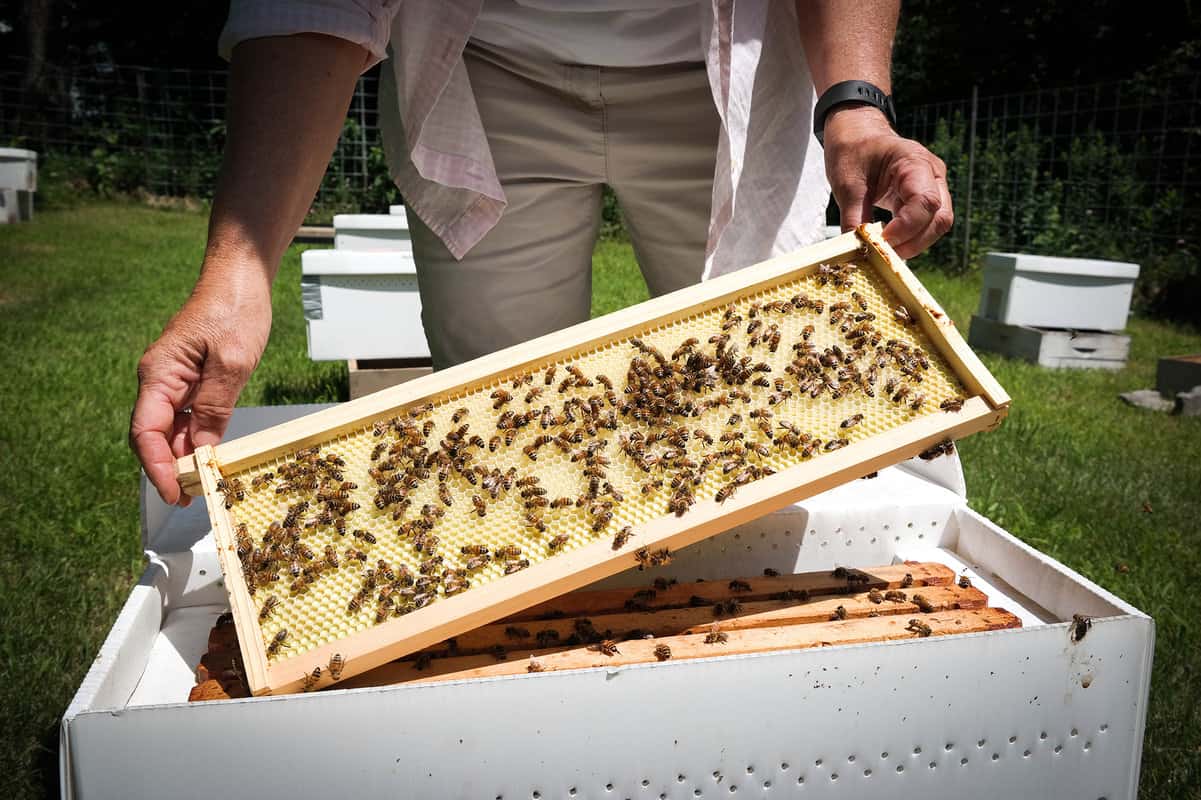
Honeybees are highly organized insects, forming complex social structures that are essential for their survival. Each colony consists of three types of bee: the queen, the workers, and the drones. The queen is the only female bee in the colony and is responsible for laying eggs. The workers are all female and are responsible for all the necessary tasks, such as foraging, building the hive, and taking care of the young. The drones are all male and their sole purpose is to mate with the queen.
Foraging
Worker bees are tasked with foraging for food, which mainly consists of nectar and pollen from flowers. On average, a worker bee will travel up to two miles in search of food, and will typically visit 50-100 flowers each trip. They use their sense of smell to find the best sources of food and can remember the location of flowers for up to three days.
Building the Hive
The workers are also responsible for building and maintaining the hive. They build the combs from wax secreted from their abdomens and fill them with honey, which is made from the nectar collected from flowers. The hive is also used to keep the colony warm in cooler months by clustering together.
Defending the Hive
The workers will also defend the hive from any potential threats. They will use their stingers to ward off predators, such as birds and other insects. They are also capable of detecting smoke, which they use to protect the hive from any fires.
Communication
Honeybees use a variety of methods to communicate with each other, including pheromones, sound, and vibration. They can communicate the location of food sources, warn other bees of danger, and even call for help if they are in distress.
Queen Bee
The queen bee is the most important bee in the colony. She is responsible for laying eggs and ensuring the survival of the colony. She can lay up to 1,500 eggs in a single day and can live for up to five years.
Drones
Drones are the only male bees in the colony and are tasked with mating with the queen. They have large eyes and long antennae, which they use to detect pheromones. They can live up to three months and typically die shortly after mating.
Colony Cycle
The lifespan of a honeybee colony can vary greatly, depending on the season and environmental conditions. Generally, the colony will begin to decline in the winter, as the worker bees die off, and will reach its peak in the summer months.
Common Honeybee Products
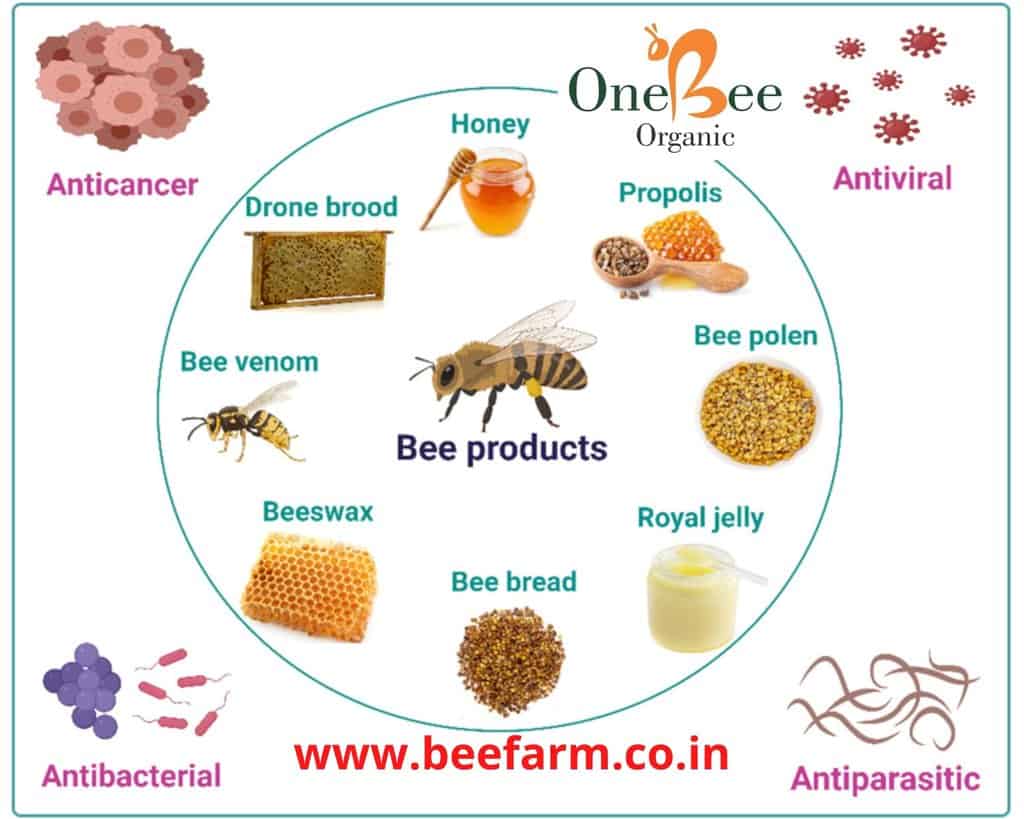
Honey is the most well-known product produced by honeybees. Honey is a sweet, viscous fluid produced from nectar and stored in honeycombs. It is used in many culinary applications and has medicinal and health benefits.
Beeswax is the second most common product made by honeybees. This wax is produced by honeybees and is used in many products such as candles, cosmetics, and home remedies.
Propolis is a sticky resin collected by honeybees from plants, and is used to reinforce the structure of the hive. Propolis has many medicinal benefits, such as antiseptic, anti-inflammatory, and antioxidant properties.
Royal Jelly is a secretion from the glands of worker bees and is used to feed the queen bee throughout her life. It is a nutrient-rich substance with many health benefits.
Bee Pollen is collected by honeybees from flowering plants and is used as a source of protein and nutrition for the hive. It is also used in health supplements and as a natural remedy for many illnesses.
Venom is a product of honeybees and is collected for medicinal purposes. Venom has anti-inflammatory and anti-allergic properties, and is used in many treatments for a variety of illnesses.
Common Honeybee Health
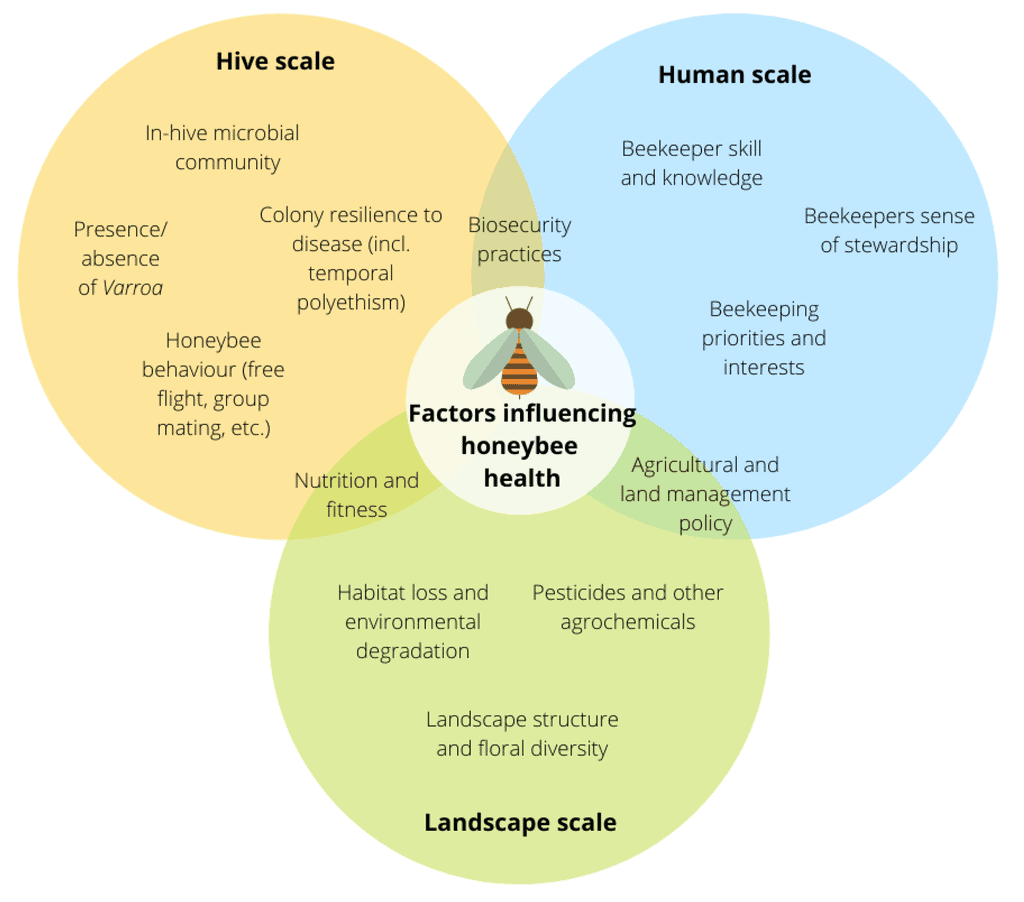
- Varroa Mites: Varroa mites are a common pest that can cause serious damage to a hive. They feed on the fat bodies of adult bees and larvae, reducing their lifespan and health. Treatment is necessary to prevent infestation.
- Diseases: Beekeepers should be aware of diseases that can affect their hive. Common diseases include American foulbrood, European foulbrood and Nosema. Treatment is necessary to keep the hive healthy.
- Pesticides: Pesticides can kill bees and disrupt the hive. To protect the hive, beekeepers should avoid using pesticides around the hive and opt for natural alternatives.
- Malnutrition: Malnutrition can occur when the bees don’t have access to the nutrients they need to stay healthy. To prevent this, beekeepers should feed their bees with a variety of pollen, nectar, and honey.
- Stresses: Stress can weaken the hive and lead to serious health issues. To reduce stress, beekeepers should keep their hives in an area with minimal disturbances and provide them with adequate space and food.
How to Care for Common Honeybee
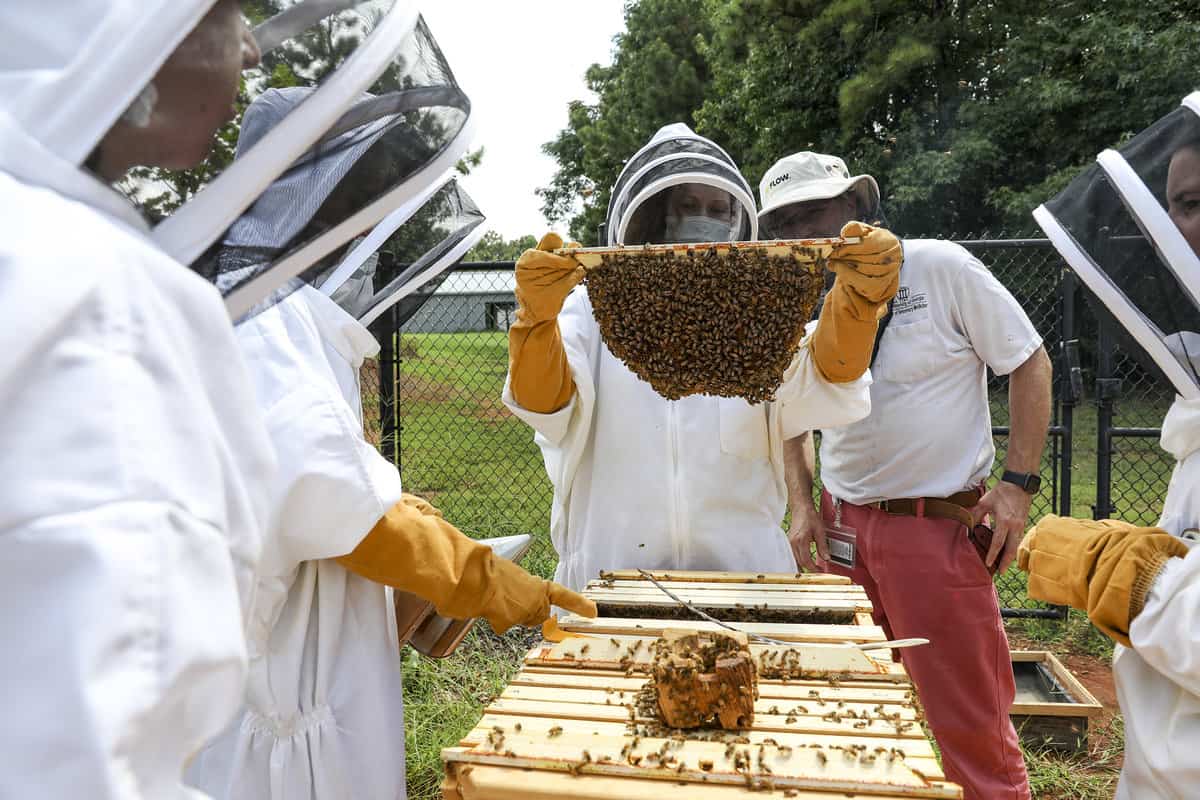
Food: Honeybees need a steady supply of nectar and pollen for food. Make sure to provide them with a continuous flow of flowers in your garden or neighborhood.
Protection: Honeybees should be protected from predators, such as skunks and bears, as well as harsh weather conditions. Install a fence or other protective measures around the hive to keep them safe.
Space: Honeybees need enough space to move around and be comfortable. Make sure to provide them with enough space to fly and gather nectar and pollen.
Ventilation: Honeybees need good ventilation in the hive. The hive should be well-ventilated to reduce the buildup of heat and moisture inside.
Hygiene: Proper hygiene is important for honeybees to stay healthy. Make sure to clean the hive regularly and remove dead bees, honeycomb, and other debris from the hive.
Monitoring: Monitor the hive regularly for signs of disease or infestation. Check for signs of mites, parasites, and other pests, and take measures to control them if needed.
Medicine: Treat honeybees with medicine if needed. Make sure to use the right medicine and follow the instructions on the package.
Common Honeybee Predators
Honeybees are often preyed upon by birds, skunks, bears, mice, and other insects. Large birds such as hawks and owls are common predators of honeybees, while small birds such as sparrows and grackles are also known to feed on honeybees. Skunks and bears are also known to feast on honeybees, especially during the winter months when food sources are scarce. Smaller predators such as mice, shrews, and voles can also cause significant damage to honeybee colonies.
Insect predators such as wasps, yellow jackets, and hornets have been known to attack honeybee colonies, often resulting in the destruction of the colony. The common honey bee is also susceptible to the parasitic mite Varroa destructor, which can severely weaken honeybee colonies. In addition, diseases such as American Foulbrood and the Bee Pestilence can also cause significant damage to honeybee colonies.
The best honey bee species in the world are able to survive and thrive under these dangerous conditions, but beekeepers should always be aware of the potential threats to their hives. By taking proper precautions and implementing strategies to protect their common honeybee colonies, beekeepers can ensure that their bees remain safe and healthy.
Frequently Asked Questions
What Equipment Do I Need to Get Started With Beekeeping?
To start beekeeping, you will need some essential equipment:
- Protective Gear: You will need a full beekeeping suit, hat, veil, and gloves. This gear will protect you from bee stings while you manage your hive.
- Bee Hive: A bee hive is a man-made structure that provides a home for bees. When getting started, you can purchase a bee hive kit that includes all the necessary components.
- Feeder: A feeder is used to provide the colony with food. There are two types of feeders: an entrance feeder and a frame feeder. The entrance feeder is placed in the entrance of the hive, while the frame feeder is placed inside the hive.
- Smoker: A smoker is used to calm the bees and make them less likely to sting. It also helps prevent swarming.
- Hive Tool: A hive tool is used to open and close the hive, and to scrape off propolis and wax.
- Bee Brush: A bee brush is used to gently remove bees from frames without harming them.
These are the basic tools you will need to get started with beekeeping. With the right equipment in hand and a little bit of knowledge, you will be able to start your own beekeeping adventure!
How Often Should I Inspect My Hive?
- Monthly: Check the entrance of the hive to make sure it is clear and the bees are flying in and out. Monitor the amount of honey being stored and the amount of bees in the hive. Also check for any signs of pests or diseases.
- Bi-Monthly: Check the hive frames to make sure the bees are maintaining their comb. Also make sure the queen is laying eggs and that the hive is free of pests or diseases.
- Seasonally: Inspect the hive for mites and other pests. Check for any signs of disease. Make sure the hive is producing enough honey for the bees over the winter months. Also check to see if the hive needs to be re-queened.
How can I protect my bees from predators?
To protect your bees from predators, you should create and maintain a secure hive that prevents wasps, birds, rodents, and other predators from accessing the hive. You can also install guard boxes around the hive, install an electric fence, and use traps and baits to reduce the number of predators near your hive. Additionally, you should check your hive regularly to ensure that any pests or predators that have gained access to the hive are removed promptly.
How Much Space Do I Need to Keep Bees?
Beekeepers should plan to keep two to three hives of bees in a single apiary, which will require at least 10 square feet of space. Each hive should be placed at least 10 feet apart to prevent bees from crowding. The beekeeper should also plan for a bee yard, which is a larger area used to store beekeeping equipment, to inspect hives, and to prepare honey supers. Bee yards typically require at least 500 square feet of space.
The beekeeper should also plan for adequate forage for the bees, which includes nectar and pollen sources such as flowering trees, shrubs, and wildflowers. The forage should be within a two-mile radius of the apiary.
What is the Best Time of Year to Start Beekeeping?
Spring: Spring is the ideal time of year to begin beekeeping. This is because plants and flowers are blooming, providing plenty of food and nectar for the bees. The temperatures are also moderate, allowing the bees to build up their numbers and begin storing honey.
Summer: Bees can be started in the summer months, but it is important to ensure they have access to plenty of food and water. It is also important to check their hives regularly to ensure they are not suffering from extreme heat.
Autumn: Autumn is a good time to start beekeeping, as the weather is cooler and the bees can store up honey for the winter months. It is important to ensure the colony is strong before winter, as the bees will need to survive cold temperatures and lack of food.
Winter: While winter is not the ideal time to start beekeeping, it is possible. The colony should be established before the winter months and should be supplied with plenty of honey and food to sustain them through the colder months.
Conclusion
Beekeeping is an enjoyable and rewarding hobby. With a little knowledge and preparation, anyone can become a successful beekeeper. It is important to know the life cycle of the honeybee, the best practices for keeping them healthy, and the different types of equipment needed for successful beekeeping. With a little patience, beekeepers can harvest delicious honey and help support the natural environment.
